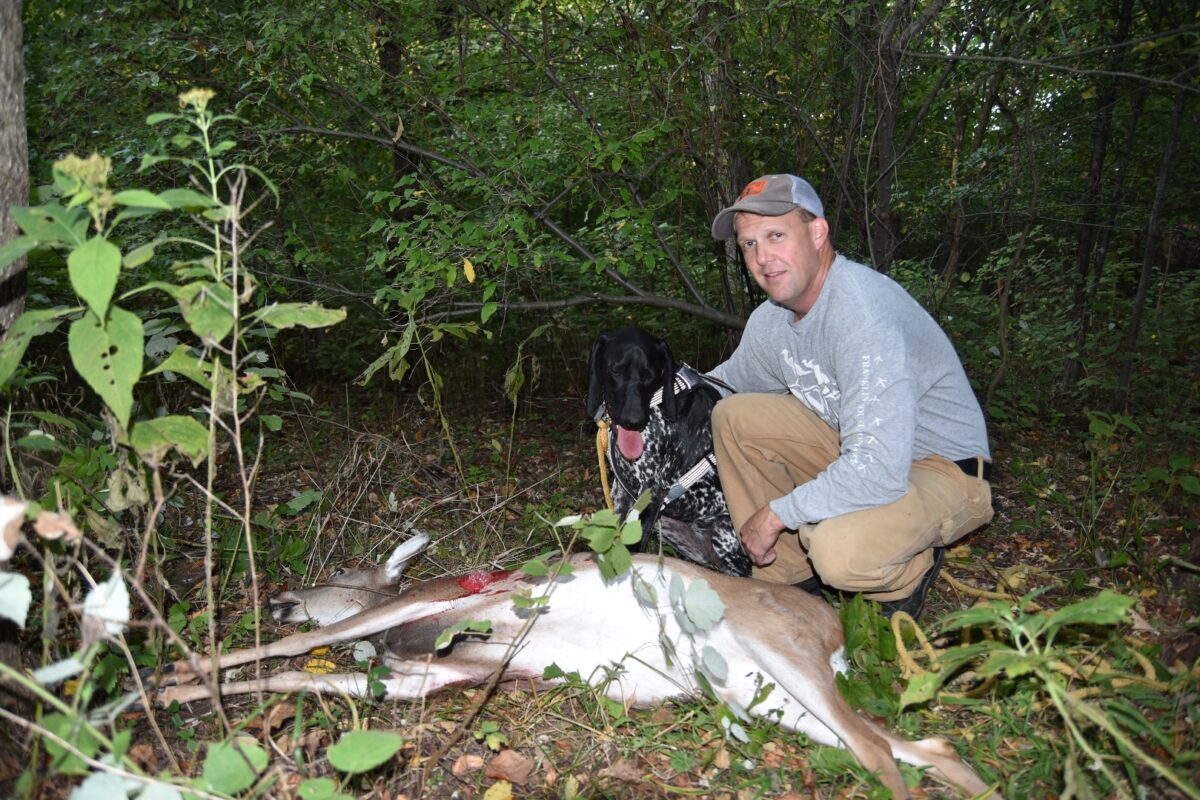Fadi Bahouth and Zander. Bahouth believes that the breed of a dog is unimportant when it comes to blood trailing.
By Bruce Ingram
Photos by Bruce Ingram
“I’m training a young dog to blood trail deer,” said Virginia Department of Wildlife Resources (DWR) Conservation Police Officer (CPO) Sergeant John Koloda. “Would you mind calling me if you’re tracking a deer so she can get more experience?”
It didn’t take long for me to fulfill John’s request, as on opening day of Virginia’s early archery season, I experienced difficulty following a scant blood trail on a Botetourt County doe. Shortly afterward, however, I found the whitetail and called John back and informed him.
“If you don’t mind, don’t field dress the doe and leave it where it is so Lady can have the experience of finding it,” he said.
Sgt. Koloda and his German shorthaired pointer soon arrived and, fascinatingly, the dog solved a trail that had baffled me in maybe three minutes—showing once again the advantage of having a deer tracking dog.

John Koloda and Lady, his German shorthaired pointer, found the author’s Botetourt doe much quicker than he did.
Fadi Bahouth, a retired chemical engineer from Huddleston, is the proud owner of Zander, a 4-year-old German wirehaired dachshund who has located dozens of deer.
“The first thing to keep in mind about deer tracking dogs is that the breed really doesn’t make any difference,” he said. “What counts most is a dog having intelligence, perseverance, a good nose, and a desire to please his owner and the courage to go up mountains or through briars or whatever it takes to find a deer.”
When I was field-dressing my Botetourt doe, Sgt. Koloda asked for the liver so that he could use it in the training of his canine. Bahouth also uses this organ.
“To start a dog’s training, all you need is a drag rope and a liver from a deer or some other animal as the smell is so strong,” he said. “The first time, drag the liver non-stop for some 50 yards and reward the dog with a treat when he finds it. Next, progressively lengthen the trail, pick up the liver for stretches at a time, and then put more and more twists and turns in the trail.
“You should also begin to periodically put down drops of blood—again from a deer or some other mammal—so the dog can get used to scenting blood. The goal is to continually make the trail longer and harder to follow, eventually doing away with the liver and maybe only having a drop of blood every 10 to 15 yards in a long, twisting trail,” said Bahouth.
The last stage of the training involves almost no blood trail at all. Bahouth says the smell from a deer’s interdigital scent glands is unique to every whitetail, and he uses that substance for a dog’s final exam.
“I mount two deer hooves on a walking stick and lay down a trail of several hundred yards,” he said. “And on that entire track I might only put down a few drops of blood. Once a dog can decipher a trail like that, he’s ready for pretty much anything.”
Bahouth recommends these two websites and one book for more information:
United Blood Trackers website
Nose to the Ground, Virginia Facebook group
“Tracking Dogs for Finding Wounded Deer” by John Jeanneney


